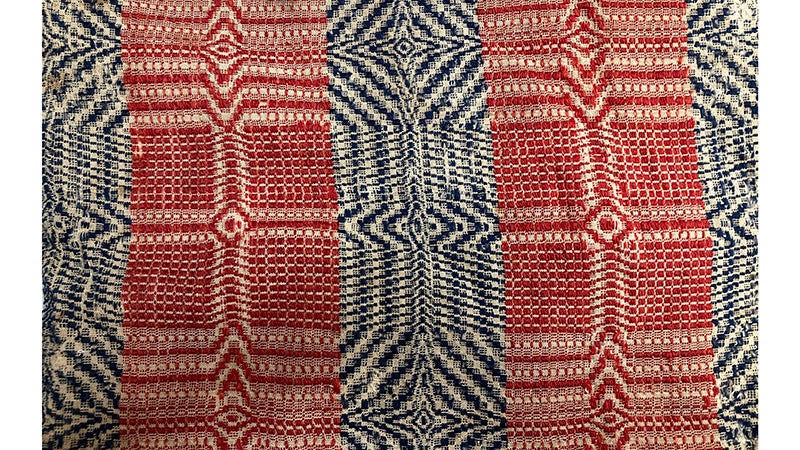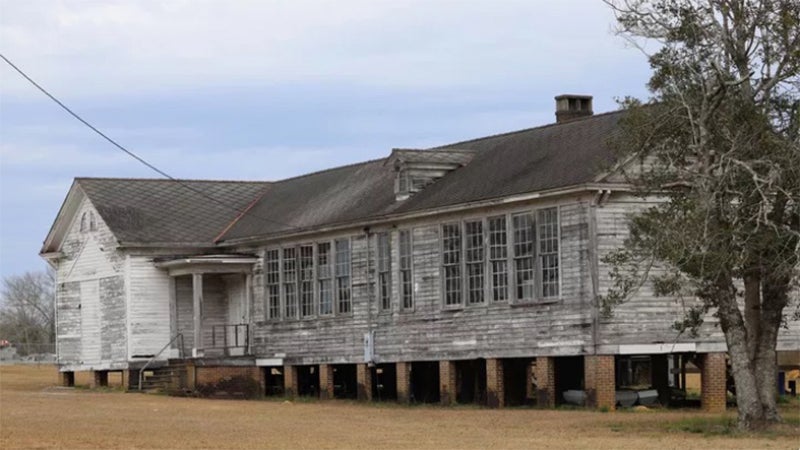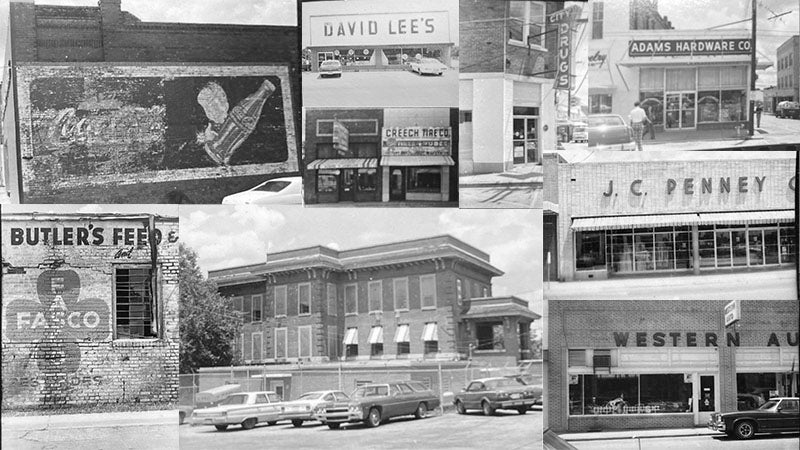Remember when: A wonderful place to live
Published 1:00 am Saturday, July 1, 2017
On February 26, 1922, The Birmingham News, known then as “The South’s Greatest Newspaper,” featured an entire page on “Andalusia Is a Wonderful Place to Live and To Make A Living.” This was written by F. W. Barnett probably with the urging of The Andalusia Star editor’s son, Oscar M. Duggar, Jr., and was described by Barnett as a “cub” on the staff of The Birmingham News. Here are excerpts that Andalusians today can be proud of today in 2017, some 95 years after this column was published.
“There is a sympathetic bond between The Andalusia Star and The Birmingham News for printer’s ink like blood is thicker than water,” penned Barnett. “A bright woman said to your correspondent, ‘The Andalusia Star is the cleanest paper I know anything about. You would think that our editor (Oscar Duggar) had lived among us all his life and was to the manor born.’”
EARLY HISTORY
“The word ‘Andalusia’ has a strange effect on this writer. He never hears it without building castles in Spain for there is a soft insinuating magic in the name which sets to work his vivid imagination and in his mind’s eye he sees picturesque streets filled with bespangled señors and dazzling short-skirted señoritas coquetting through the folds of their veils and the deserted square save for the lover who with guitar in hand sings beneath the balcony of his lady love or the fearless toreador throwing the bull. “
“But the modern Andalusians are no “bull throwers” despite the fact that they think well of themselves and their hometown, for it is impossible to exaggerate when speaking of its merit as a city in which to live and to make a living. No one seems to know who christened the town Andalusia, and furthermore, it is impossible to trace any Spaniards to its vicinity, and yet, somehow, or somewhere, there was somebody who knew something of Spain and its history for the first county seat bore the name Montezuma. Although no Spaniards have been resurrected, there is some trace of Indians though they were not here in great numbers, their habitations being widely scattered along the streams. According to the best authorities, there was no Indian town or settlement within the bounds of Covington County and was little more than a hunting ground for the Seminole and Creeks until they were removed about 1838.”
“So little information exists as to Montezuma though it was the county seat and chief town of the county for about 30 years beginning when the first white settlers came in mostly from Oglethorpe, Hancock, and Baldwin and other counties of Georgia settling along the Conecuh River forming a colony which soon received additions from the Carolinas and Virginia. We are in the dark about the number of its inhabitants, the names of its leading citizens, its churches or its schools if it had any, and, in fact, we know nothing whatsoever concerning its social or political life. “
“There is a tradition that it was destroyed by an overflow of the river, the fleeing people going to the hills, the high water being succeeded by an epidemic of fever caused by a plague of mosquitoes, a series of calamities which resulted in the removal of the county seat. There is no getting away from the early history of Alabama towns and counties for the honor of having the court to meet within its borders was coveted and fought for fiercely.”
“In 1842 the name of the community where now Andalusia stands was New Site, and the land on which it is located was entered by John Robinson who gave 40 acres to secure for the town the permanent establishment of the county seat. Although it may seem strange, the county contained a population of several hundred, but there was not an individual who owned a foot of land. They were all squatters.”
HOW COUNTY WAS MADE
“Covington County was carved out of Henry County in the year 1821 and was named for General Leonard Covington, a native of Maryland, a gallant soldier killed in the War of 1812 with Great Britain. The five commissioners appointed by the legislature to organize the county in December 1821 recorded here for future generations caring to preserve this story include William Carter, Jr.; James R. Mobley; Aaron Lockhart; Henry Jones, and Abel Polk. Other commissioners were named in December 1822, but at that time Montezuma did not go by that name as shown on the old maps (1831). It was known as Covington. The first officers were John R. Mobley, judge; John H. Stone, sheriff; and Samuel Bracken, clerk of circuit court. In 1840, the county government was removed three miles to the present site of Andalusia and no trace of the older settlement now remains. The first courthouse in Andalusia was an old wooden structure destroyed by fire of incendiary origin in the year 1878, and all the county records, priceless because they were the repository of all the early history, were lost. Marion Lisco, who was accused of setting the building on fire, was arrested but made his escape and was never afterwards captured.”
NEW COURTHOUSE ERECTED
“Another courthouse was erected on the same site, likewise of wood, a two-story frame building, with four offices downstairs separated by wide halls. It had four chimneys of white limestone. This building was also destroyed by fire in 1895, the work of another incendiary. Several of the most important records were saved this time being locked up in the safe in the office of the judge of probate. By this time, the county had increased in population and wealth to the extent
that it built a brick courthouse in 1896.”
“The present courthouse (Circa 1917) is without a doubt an architectural triumph. It is one of the most beautifully proportioned public buildings not only in Alabama and the South but in America. The writer prides himself in saying that he only hopes that Birmingham will have as handsome a building some day in the near future around which to group its civic center as has Andalusia in its magnificent courthouse which faces the public square. The building has not been overpraised, it would hold its own even among the great government buildings at Washington, and will long stand as a monument to the men who erected it and in the city which it adorns. The county has had five courthouses and five jails within its 100 years of life.”
LAND OFFICE OPENED
“Up to 1821, all the white settlers in Covington County were squatters. The lands were surveyed in the last two quarters of 1821 and the first quarter of 1822. The chief surveyor, John Coffee, had his office at Florence. All field notes of surveys were sent to him, and it was not until 1823 that the results of the survey were platted and entered of record in the General Land Office at Washington.”
“A federal land office was opened at Sparta in Conecuh County in December 1823, according to Morgan D. Jones who has done his city and county a service by studying the records. On the 8th day of that month, Milton Amos made entry by cash purchase of 80 acres which lies below Simmons Bridge and thereby became the very first individual who owned land by legal right and title in Covington County. But within a week of the opening of the land office, more than 6,000 acres had been purchased. The population of the county as a whole, however, increased very slowly prior to the advent of the railroad and the remainder of the county undeveloped for the first 30 years after its organization.”
PUBLIC BUILDINGS AND SCHOOLS
“There are evidently some Andalusians who have excellent taste when it comes to public buildings, for not only is the courthouse good to look upon with its soft colored stone on granite foundation, but the high school building (E3N) is also most attractive; in fact, it is in a class with the new Woodlawn High School building which is saying a whole lot, and especially so when a community with 5,000 population measures up so closely to one with 200,000. An election has been called for the purpose of obtaining authority to issue bonds to the amount of $55,000 for the erection of a new high school building (the Church Street School), the present structure to be converted into a grammar school. There are 27 teachers and 950 pupils, 225 in the high school and 725 in the elementary school. The high school was placed on the accredited list of Southern colleges in 1914. Its graduates can enter Southern colleges without examination. It gives a full 4-year course in the following subjects: English, history, mathematics, science, Latin, French, home economics, and music. The growth shows evidence that Andalusians believe in education.”
“The Baptists have a handsome church building; the Presbyterians also have an attractive house of worship; and the Methodists are going to build soon. The Christian church is an unpretentious wooden one as is also the Catholic church.”
“Andalusia has an active chamber of commerce; three hotels; two big warehouses; two wholesale grocery companies; one of the largest wholesale hardware houses in the state; numerous retail establishments; a stove foundry; a fertilize factory; a peanut shelling plant; a feed mill; several first-class garages; one newspaper office; three large livestock dealers; two modern hospitals; professional men in law, medicine, and dentistry; the Covington County Hospital and the City Hospital; several civic clubs (Study Club, Mentor Club, McDowell Music Club, Civics Club, Rotary Club, Kiwanis Club, Royal Masons, Knights of Pythia); a free public library; a boy scout troop, a camp fire girls’ organization; a modern dairy; a sweet potato curing plant; an ice plant, a water works, light and power; a candy factory; an armory and drill ground with a machine gun troop at the fairgrounds (on Sanford Road); and two railroads, the Louisville and Nashville and the Central of Georgia. Prior to the coming of the railroads (in 1899), there was no transportation except by means of wagon. One firm, a while back, sent a carload of eggs to Cuba. Most of the eggs and poultry, however, go to Florida. There are about 20 cars of mules handled here during the good seasons with only about 3 on the market at the present. The city has three miles of excellent paving, sanitary sewers, ten miles of concreted sidewalks, and a large city square being plowed up to be sown in grass and planted in shrubbery. ”
“There are two strong banks, The Andalusia National Bank and The First National Bank just completing the handsomest skyscraper in Southeast Alabama. The Andalusia National Bank also has a most attractive building within and without, the vault being of white marble and exquisite enough for a mausoleum for a king.”
“The Conecuh River is navigable for light boats at certain seasons. But for the obstructions in the river, it would be a valuable waterway to this section of Alabama. Andalusia has now woke up and is now one of the wonder cities of Southeast Alabama as seen in this story of marvelous growth in educational, religious, social and business lines.”
“The hometown of Andalusia is a city awake to all opportunities and believes that if you try Andalusia, you’ll stay! In 1890 Uncle Sam had only 270 heads to count, but in 1920 he had 5,000 to set down in his census book, and there isn’t a dead one in the bunch!”
For all of the historians who read this account, please be aware that this information was quoted from the 1922 newspaper. Specific dates and other historical facts may be challenged today as research may have uncovered additional information, but this is how it was recorded then. Citizens can certainly take pride and be inspired as we REMEMBER WHEN and envision the city back then recognizing with gratitude the lavish praises that this writer heaped on those who so fervently worked in harder times than these to bring progress to early Andalusia.





